
Ever wondered how to be absolutely certain about the purity of your gold holdings? It's a common concern, considering that the value of gold depends on its purity. Well, let us introduce you to the gold assay.
What is assay gold? It is a process that lets you know the exact amount of gold in your bars, bullion, or other gold items. It's like a truth serum for your gold!
For instance, if you buy gold labeled as 24-karat, but the assay reveals it's only 80% gold, you'd have paid a premium for something less valuable. The gold assay is like having an x-ray vision of your precious metals!
Gold assaying is essential as it verifies that the purchased gold is of the claimed purity level and meets the standards set by the bullion product’s mint. It ensures transparency and honesty for investors looking to buy gold. In this blog, we will examine gold assaying, its historical evolution, its process, and the significance of a certificate of authenticity.
Ever wondered how to be absolutely certain about the purity of your gold holdings? It's a common concern, considering that the value of gold depends on its purity. Well, let us introduce you to the gold assay.
What is assay gold? It is a process that lets you know the exact amount of gold in your bars, bullion, or other gold items. It's like a truth serum for your gold!
For instance, if you buy gold labeled as 24-karat, but the assay reveals it's only 80% gold, you'd have paid a premium for something less valuable. The gold assay is like having an x-ray vision of your precious metals!
Gold assaying is essential as it verifies that the purchased gold is of the claimed purity level and meets the standards set by the bullion product’s mint. It ensures transparency and honesty for investors looking to buy gold. In this blog, we will examine gold assaying, its historical evolution, its process, and the significance of a certificate of authenticity.
It should come as no surprise that gold has been subjected to quality checks for purity for thousands of years, considering the metal's historical significance.
In ancient Egypt, the Pharaoh Menes would stamp gold ingots to denote their purity. Similarly, hallmarking, or the practice of marking pure precious metals, has a long history in England.
These days, a lot of governments have passed laws dictating the minimum fineness requirements for gold and other precious metals that are sold.
| Sr. no. | Method | About the Method |
|---|---|---|
| 1. | Touchstone | The period from 2600 to 1900 BC is known as the Harappa period of the Indus Valley civilization. Touchstone, a black siliceous stone, was utilized to determine the purity of gold and silver from this period. |
| 2. | Fire Assay | In the following Iron Age period, the process of fire assay involved heating and melting the base metals together with surplus lead to extract the noble metals. |
| 3. | Acid test | The gold can be identified as real, fake, or just glided using the nitric acid test. |
| 4. | X-Ray Fluorescence (XRF) | X-ray fluorescence analysis is an extremely effective method for accurately figuring out the purity and composition of the metal. |
| 5. | Advanced Spectrometry | When it comes to testing precious metals, energy-dispersive X-ray fluorescence (EDXRF) presents a challenge to the conventional fire assay method. Due to its non-destructive nature, it is quickly replacing destructive techniques as the method of choice in the precious metals industry for applications where sample integrity is crucial. |
It is nearly impossible to determine the purity of gold with the naked eye; therefore, the process of gold assaying is essential. Various techniques for gold assaying exist, so let's explore each in depth.

By using this method, one can calculate the karats of gold by comparing the gold's reaction with an acid to established benchmarks. Solutions for testing 10K, 14K, and 18K gold and a solution for testing silver should be included in the gold testing acids.
Step 1: Mark jewelry orgold bullionon the touchstone.
Step 2: dab the scratch with a drop of gold testing acid
Step 3: 24-karat gold is present if there is no reaction. If you observe any reactions, utilize each of the various solutions to ascertain the solution's purity.

One of the most traditional and reliable—though completely destructive—methods for determining the purity content of precious metals, especially gold and silver.
Step 1: Put the sample in a crucible and mix it with any additional ingredients, such as sodium bicarbonate, potassium carbonate, and lead oxide.
Step 2: Heat the mixture until two distinct layers form.
Step 3: Gently discard the upper separated layer.
Step 4: Fill the mold with the lower metal layer, then allow it to cool.
Step 5: oxidize the lead by cupping the metal.
Step 6: Use nitric acid to dissolve the metal in order to separate gold from silver. Silver dissolves in acid, but gold does not.
Step 7: Rinse the gold with water and measure its weight. By comparing the weight of the gold to the weight of the initial sample, you can establish the percentage of gold in your ore or scrap.
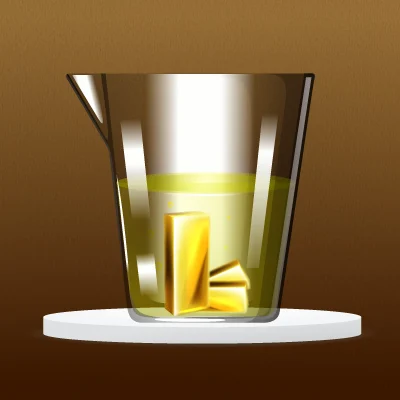
The next technique for testing gold's purity is to dissolve it in a solution of nitric and hydrochloric acids.
Step 1: Prepare the aqua regia by combining nitric acid and hydrochloric acid in a 3:1 ratio.
Step 2: Dissolve the metal in this prepared aqua regia. A sludge could form if the nonmetal and silver chloride don't dissolve in the liquid.
Step 3: Filter the sludge. The metal-containing aqua regia solution will cross over to the other side.
Step 4: Boil this solution to get rid of the nitric acid.
Step 5: Use oxalic acid to precipitate the gold out of the solution.
Step 6: Weight the gold using a scale. Compare the weight of the gold to the weight of the original sample to calculate the ratio of gold to other metals and minerals.
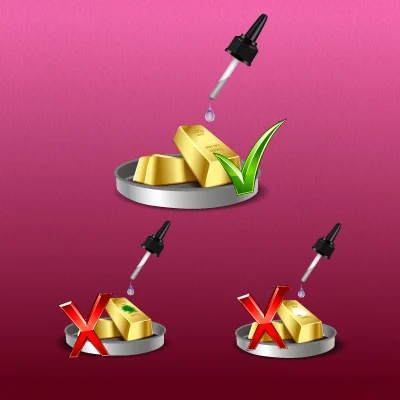
A nitric acid solution suitable for the gold piece's claimed purity is required. Nitric acid testing solutions, for example, are available for 10, 14, and 18-karat gold.
Step 1: Fill the stainless steel dish with the gold product. Fill the dropper with nitric acid, then mist the surface of the object with it.
Step 2: if you see a light green discoloration, the item is most likely not made of gold; it may be gilded on the surface.
Step 3: If a white film is on the object's surface, it is probably made of gilded silver.
Step 4: You are fortunate to have a real gold item if you apply acid to it and there is no reaction.

This kind of assay, also called XRF, is far more intricate than a stone assay. XRF assays are renowned for being quick, precise, and safe for the metal being tested. In essence, X-rays are used to bathe a metal sample. After that, the metal fluoresces or releases light at an energy level determined by its atomic structure. The XRF machine measures this energy level and determines the metal's purity. Because an XRF is so comprehensive, it can simultaneously measure the impurity percentage.
Step 1: Position the gold sample onto the XRF apparatus.
Step 2: Select the specimen's smooth, level surface to use X-ray illumination on.
Step 3: Adjust the radiation's direction with a class II focus laser.
Step 4: When photons with enough energy strike a material, XRF radiation is produced.
Step 5: Each element's distinctive X-rays enable element identification.
Step 6: Results are shown in a matter of seconds.
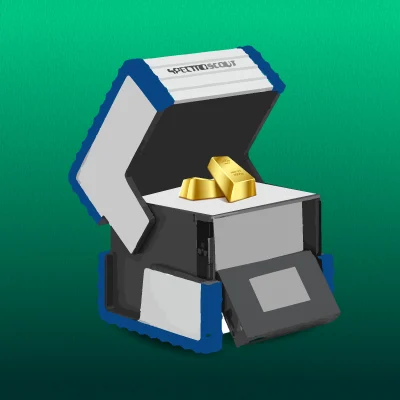
In the precious metals industry, energy-dispersive X-ray fluorescence (EDXRF) spectroscopy is becoming the go-to nondestructive method for analyzing precious metals, including gold.
Step 1: Insert tiny jewelry pieces into the spectrometer.
Step 2: Adjust the sample using the X-ray beam collimation.
Step 3: Take a picture of and locate the sample using the camera.
Step 4: Increase the input count rate by adjusting the tube current.
Step 5: Conduct the measurements in an atmosphere with air.
Step 6: The energy levels of the released X-rays are measured by the XRF analyzer using an energy-dispersive detector.
Step 7: To determine the concentration of each element in the sample, the analyzer compares the energy levels to established standards.
Assaying is an essential step in the production of precious metal bullion since purity is essential to both producing and selling it. A silver or gold assay is primarily done to make sure the bullion struck from these precious metals satisfies the mint's specifications.
It is important to ensure that the item you desire, be it silver, gold, platinum, or palladium, is indeed the required purity, as stated by the mint.
Several governments and private mints guarantee the precious metal content and purity of bullion products, including the US Mint, the Austrian Mint, the South African Mint, the Royal Canadian Mint, the Australian Perth Mint, and others.
This guarantee is an assay of the bullion and the raw metal.
However, some mints go above and beyond purity testing; one such mint is the Royal Mint, which continues to assay newly minted coins using the ancient ceremonial method known as the "Trial of the Pyx" to ensure that they meet all legal requirements.
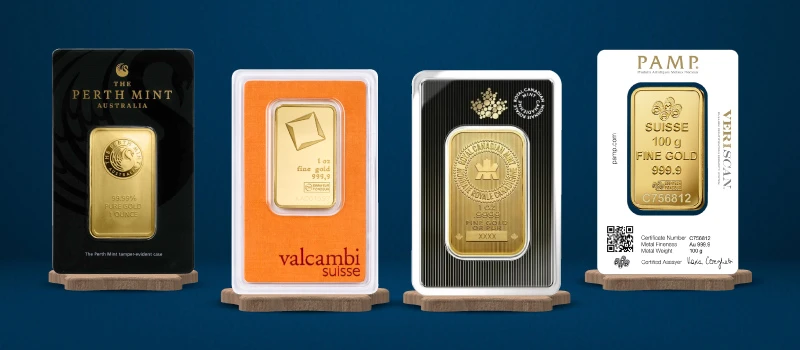
Most of the bullion products, like bars, come with an assay card; this is standard for both gold and silver. Palladium and platinum are frequently included on an assay card. Since bars are typically quite large items with the highest purity levels, they are valuable and almost always come with an assay card.
Assay cards are also included with some special edition or limited edition coins to verify their authenticity and value. However, the majority of common bullion coins—especially those that are still in use—do not include an assay card.
BOLD offers a wide inventory ofgold barswith assay cards, including 1 oz Valcambi gold bar, Perth 1 oz gold bar, 1 oz RCM gold bar, and 100 gram PAMP gold bar.
An assay certificate or card and a certificate of authenticity (COA) are similar in certain ways. Usually, it's a seal or sticker on a confidential product. The seal verifies the authenticity of the coin or bullion and is typically found on a document or the actual certificate.
But unlike an assay, there is usually no extensive procedure to demonstrate the item's purity, or at least not one that goes to such lengths. In a similar vein, unlike an assay card, a COA does not seal a piece of gold or silver.
Nevertheless, a COA does include important details such as a purity certificate and an endorsement. It will typically have information about its fineness and weight and some kind of maker's mark.
Certain products do not require a COA for various reasons, including the possibility that they could arrive in large quantities or with an assay, which would eliminate the need for a COA.
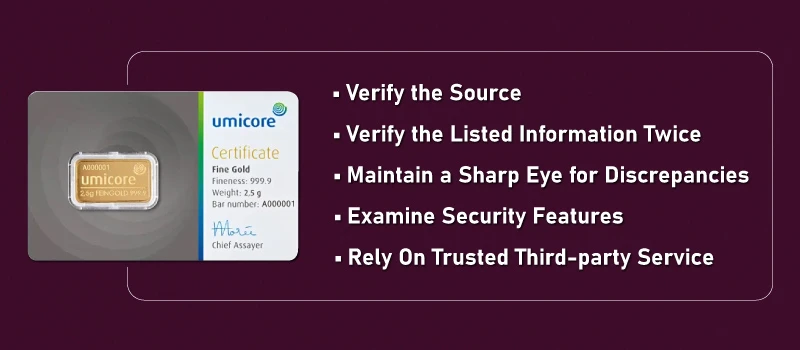
Because so much money is exchanged in the bullion industry, reputation and trust are very important. Therefore, it is even more crucial to confirm the assay and the certificate of authenticity card in order to win the buyer's trust.
Several methods exist for verifying the legitimacy of COAs, and assays are:
Verify the Source
A trustworthy refinery or bullion dealer should provide the COA, and the buyer should confirm the assay. To verify the legitimacy of the source, look for details like the refinery or bullion dealer's phone number, email address, and website.
Verify the Listed Information Twice.
Check the assay and the COA, which lists all the product's important details, such as the name, weight, and serial number, to ensure that the information matches the actual product.
Maintain a Sharp Eye for Discrepancies
Pay close attention to the information listed in the assay and COA. Any spelling mistakes or irregularities in the document's format or layout should raise suspicions that the assay or COA is fraudulent.
Examine Security Features
To prevent the production of counterfeit goods, COA incorporates extra security measures like a hologram or the item's serial number. Look for these features to make sure they match the product.
Rely On Trusted Third-party Service
You can always seek assistance from a third-party service to verify the authenticity of bullion products for added peace of mind. Reputable companies like the Professional Coin Grading Service (PCGS) or the Numismatic Guaranty Corporation (NGC) specialize in testing the authenticity of precious metals.
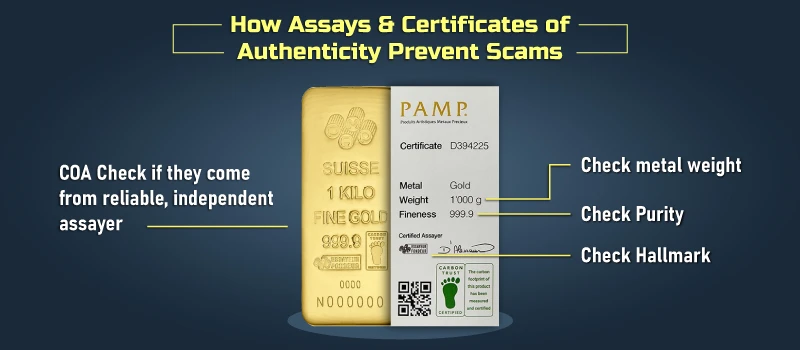
As with any investment, purchasing precious metals has many advantages, but there is also some risk involved. A decline in market value and market liquidity, as well as the biggest fraud and dishonest sales of bullion products, could all pose risks.
You can weather the economic storms in the bullion market, but how can you bounce back from buying fake goods?
Let's examine some serious frauds in the bullion market and discuss how to avoid them with the help of assays and COAs:
Selling of Fake Bars or Coins
Scammers and fraudsters are well known for manufacturing phony gold or silver coins and bars and peddling them to gullible and innocent people. First-time purchasers or those who are not familiar with the quality of genuine precious metals may find it challenging to distinguish counterfeit products.
Inflating or Overcharging Premiums
In order to exploit buyers who are unaware of the market value of precious metals, dealers frequently place high prices on them; as a result, customers end up paying more than the product is actually worth.
Switch-and-Bait Strategies
Some dealers might use low-premium advertising to draw customers in, only to trick them into calling or coming into the store to buy high-premium products. Additionally, these dealers attempt to force the customer into buying precious metals by inflating their purity, market value, and other attributes above and beyond their means.
Asking for an assay card and a certificate of authenticity when you buy any precious metal is the best way to ensure that you are not a victim of these types of scams. Make certain that the metal weight, purity, and hallmark are included in the assay and COA provided and that they come from a reliable, independent assayer.
You can also consult a precious metals expert or buy Precious Metals Verifiers like Sigma Metalytics Devices to check the authenticity of your bullion coin or bar.
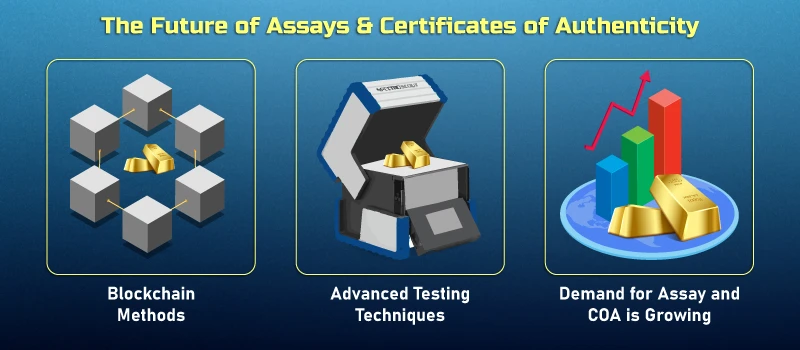
There is no doubt that as industry standards and technology in the bullion sector continue to advance, assays and COA will benefit in the long run. Future advancements could include the following:
Blockchain Methods
Assayers and dealers of bullion can use blockchain technology to guarantee tamper-proof and transparent recording of metals, including ownership, purity, and weight, which can only be accessed by authorized personnel. It might increase the demand for hard copies of certificates and facilitate the traceability of metal origins.
Advanced Testing Techniques
The development of technology can result in the creation of complex testing procedures to determine a metal's purity. Technology has made it possible to produce and make widely available X-ray fluorescence machines, which are in high demand these days.
Demand for Assay and COA is Growing
The need to confirm the authenticity and purity of the precious metals will grow as bullion dealers fight for the same customer base. This could result in a rise in the demand for independent assays and certificates of authenticity from buyers who want to be sure they are getting a genuine, high-quality product.
Assay gold is vital in a world where scams are a constant worry, and the value of precious metals is subject to fluctuations. By serving as a guardian, it guarantees that the object you are holding is authentic and of the greatest caliber.
Customers can feel safe and informed about their purchases when they purchase products that include assay cards and a certificate of authenticity.
BOLD Precious Metals prioritizes providing trustworthy and reliable services to customers. We know the value of assay gold and certificates of authenticity in protecting your precious metal investments from fraud, regardless of your level of experience as an investor.
At BOLD, we offer a wide inventory of assay gold and silver bullion products at the lowest prices. This provides you with a sense of security, allowing you to stay informed and demonstrate the legitimacy of your holdings.






















